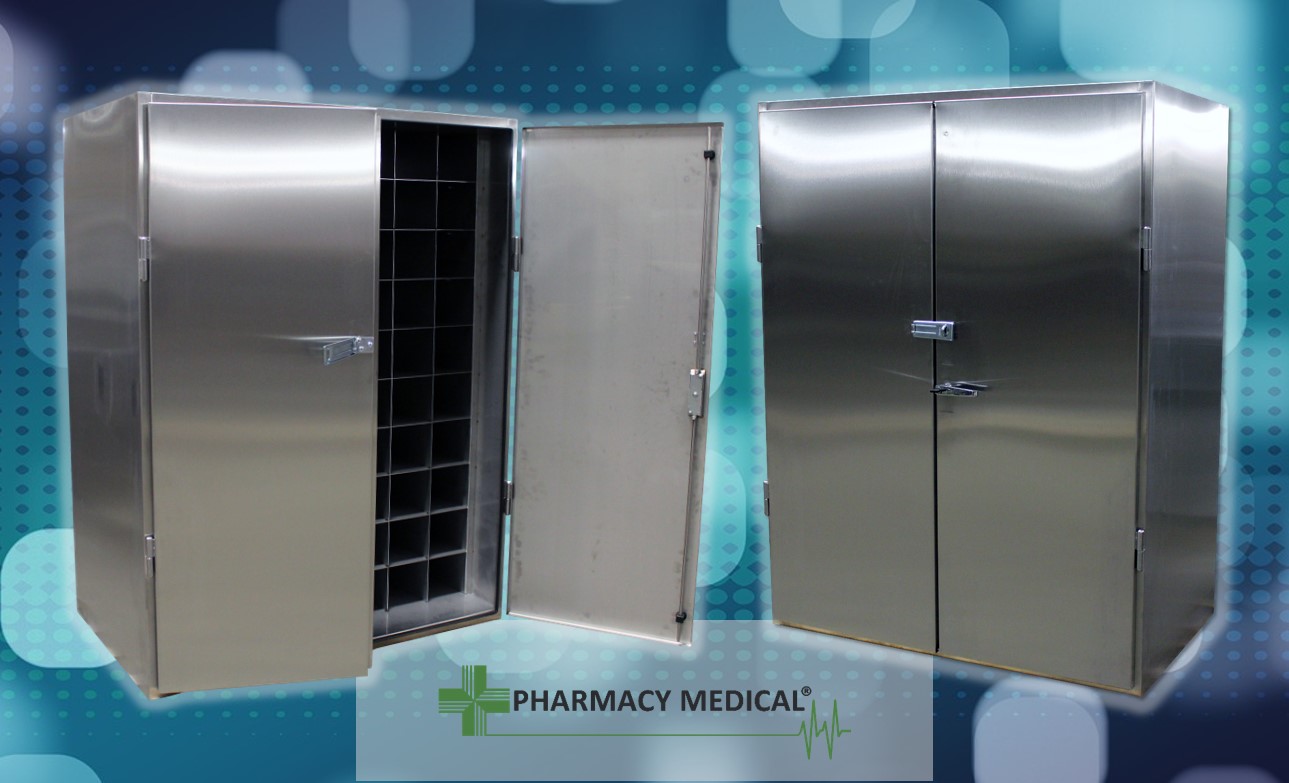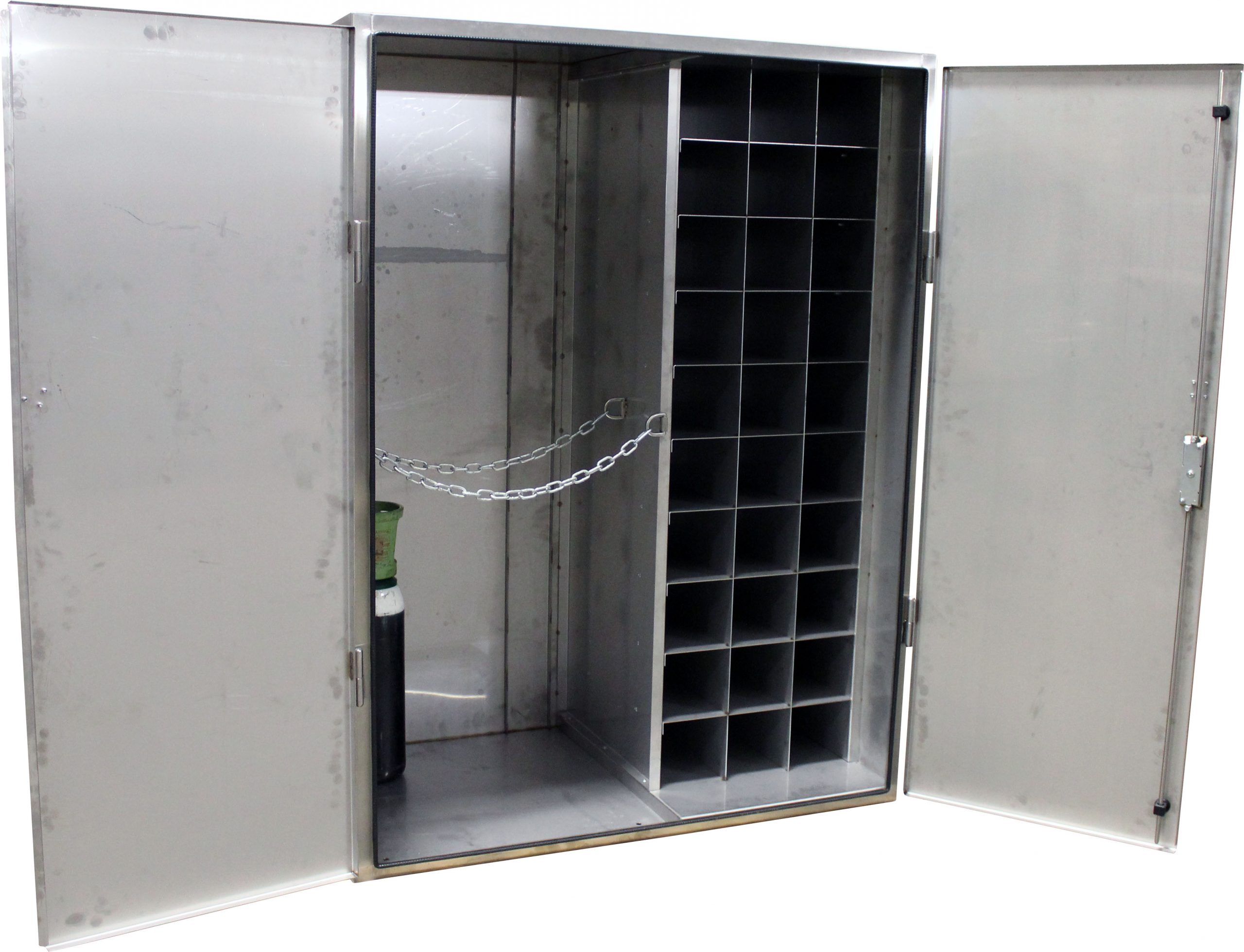Medical Gas Storage Cabinet Overview

Medical gas storage cabinets are essential components in healthcare facilities, ensuring the safe and efficient storage and distribution of medical gases. These cabinets are specifically designed to house and protect various medical gases, playing a crucial role in patient care and medical procedures.
Purpose and Function
Medical gas storage cabinets serve as secure and regulated environments for storing and dispensing medical gases. They are designed to:
- Protect medical gases from contamination and damage: These cabinets provide a controlled environment, shielding gases from environmental factors like dust, moisture, and extreme temperatures that could compromise their purity and effectiveness.
- Ensure safe and efficient distribution: The cabinets facilitate the controlled release of gases, allowing healthcare professionals to administer them safely and accurately during patient care.
- Comply with safety regulations: Medical gas storage cabinets are built to meet stringent safety standards, minimizing the risk of leaks, explosions, and other hazards associated with the handling of medical gases.
Types of Medical Gases Stored
A wide range of medical gases are commonly stored in these cabinets, each serving specific medical purposes. Some of the most frequently encountered medical gases include:
- Oxygen (O2): Essential for respiratory support and medical procedures requiring supplemental oxygen.
- Nitrogen (N2): Used in various applications, including cryogenic storage, surgical procedures, and anesthesia.
- Nitrous Oxide (N2O): Primarily used as an anesthetic agent, providing pain relief and sedation during surgical procedures.
- Carbon Dioxide (CO2): Used in various medical applications, including laser surgery, anesthesia, and respiratory therapy.
- Helium (He): Employed in respiratory therapy for patients with breathing difficulties, particularly those with asthma.
- Medical Air: A mixture of gases, primarily nitrogen and oxygen, used for various medical purposes, including ventilation and nebulization.
Safety Regulations and Standards
The storage and handling of medical gases are subject to strict safety regulations and standards to prevent accidents and ensure patient safety. These regulations typically cover aspects like:
- Cabinet Construction and Materials: Medical gas storage cabinets must be constructed from non-combustible materials and meet specific strength and durability requirements to withstand potential pressure fluctuations and impacts.
- Ventilation and Leak Detection: Adequate ventilation is essential to prevent the accumulation of gases and ensure the timely detection of leaks. Cabinets are often equipped with leak detection systems that trigger alarms in case of gas leaks.
- Gas Cylinder Storage and Handling: Regulations dictate how gas cylinders are stored and handled within the cabinet, ensuring proper securing, labeling, and periodic inspection to prevent accidents.
- Emergency Procedures: Healthcare facilities must have well-defined emergency procedures in place for handling incidents related to medical gas storage, including procedures for evacuating personnel and containing leaks.
Design and Features: Medical Gas Storage Cabinet

Medical gas storage cabinets are designed to safely and securely store and distribute medical gases in healthcare facilities. Their design incorporates various components and features to ensure optimal functionality, safety, and accessibility.
Essential Components
The essential components of a medical gas storage cabinet include:
- Gas cylinders: These are the primary containers for storing medical gases. They are typically made of high-pressure steel and come in various sizes and configurations.
- Cylinder manifold: This component distributes gas from multiple cylinders to a single outlet, allowing for efficient and centralized control of gas flow.
- Pressure regulators: These devices reduce the high pressure of the gas in the cylinders to a safe and usable pressure for medical applications.
- Flow meters: These instruments measure and control the flow rate of gas to ensure accurate and precise delivery to medical equipment.
- Alarm systems: These systems monitor various parameters, such as pressure, flow, and temperature, and alert users to any potential issues or malfunctions.
- Locking mechanisms: These features provide security and prevent unauthorized access to the stored gases.
- Ventilation system: This system ensures adequate ventilation to prevent the buildup of flammable or toxic gases.
Cabinet Designs
Medical gas storage cabinets come in various designs to accommodate different needs and space requirements. The key factors to consider include:
- Size: Cabinets are available in different sizes, ranging from small wall-mounted units to large floor-standing models. The size selection depends on the number of cylinders to be stored and the space available.
- Materials: Cabinets are typically made of durable materials like steel or aluminum, which are resistant to corrosion and impact. Some cabinets may have additional features, such as fire-resistant coatings or reinforced doors.
- Ventilation systems: Ventilation systems are crucial for ensuring proper airflow and preventing the buildup of gases. Different designs include passive ventilation, using natural air circulation, and active ventilation, using fans or other mechanical systems.
Safety and Accessibility Features
Medical gas storage cabinets are designed with features that enhance safety and accessibility:
- Alarms: Cabinets may include various alarms, such as pressure alarms, flow alarms, and temperature alarms. These alarms alert users to any potential issues or malfunctions, ensuring prompt action and preventing accidents.
- Pressure gauges: Pressure gauges provide real-time information about the pressure of the stored gases, allowing for accurate monitoring and control.
- Locking mechanisms: Locking mechanisms prevent unauthorized access to the stored gases, ensuring safety and security. These mechanisms can range from simple locks to more sophisticated electronic systems.
- Accessibility: Cabinets are designed to be easily accessible for medical personnel. Features like clear labeling, easy-to-use controls, and ergonomic design enhance accessibility and efficiency.
Pros and Cons of Different Options
| Option | Pros | Cons |
|---|---|---|
| Wall-mounted cabinets | Space-saving, easy to install, affordable | Limited storage capacity, may not be suitable for large volumes of gas |
| Floor-standing cabinets | Large storage capacity, can accommodate various cylinder sizes, robust construction | Requires more floor space, can be expensive |
| Mobile cabinets | Portable, easy to relocate, suitable for temporary or mobile applications | Limited storage capacity, may not be as stable as floor-standing cabinets |
Installation and Maintenance

Proper installation and regular maintenance are crucial for ensuring the safe and efficient operation of a medical gas storage cabinet. This section provides a step-by-step guide for installation, discusses the importance of environmental conditions, Artikels a maintenance schedule, and provides a checklist for inspecting the cabinet for potential hazards.
Installation
Installing a medical gas storage cabinet requires careful planning and execution to ensure its proper function and safety. The following steps provide a general guideline for the installation process:
- Site Selection: Choose a location that is well-ventilated, dry, and away from sources of heat, moisture, and direct sunlight. The area should be easily accessible for maintenance and emergency response.
- Foundation Preparation: Ensure a level and sturdy foundation that can support the weight of the cabinet. If necessary, consult a structural engineer to determine the appropriate foundation design.
- Cabinet Placement: Position the cabinet in the selected location, ensuring adequate clearance for access and ventilation. Allow sufficient space around the cabinet for proper airflow and ease of maintenance.
- Gas Line Connections: Connect the cabinet to the medical gas supply lines using certified and compatible fittings. Ensure all connections are leak-free and properly secured. Consult a qualified gas technician for these connections.
- Electrical Connections: Connect the cabinet to a dedicated electrical circuit that meets the manufacturer’s specifications. Ensure proper grounding and safety measures are in place.
- Testing and Commissioning: After installation, thoroughly test the cabinet’s functionality, including pressure gauges, alarms, and safety systems. Ensure all systems are operational and meet the required standards.
Environmental Conditions, Medical gas storage cabinet
Maintaining the appropriate environmental conditions is essential for the safe and reliable operation of a medical gas storage cabinet. The following factors should be considered:
- Ventilation: Adequate ventilation is crucial to prevent the accumulation of flammable or toxic gases. Ensure sufficient airflow around the cabinet to maintain a safe environment.
- Temperature and Humidity: The cabinet should be located in an environment with controlled temperature and humidity levels. Extreme temperatures or humidity can affect the performance and safety of the stored gases.
- Moisture: Moisture can corrode metal components and affect the integrity of the cabinet. Keep the cabinet dry and protected from moisture sources.
- Fire Protection: The cabinet should be located in an area with appropriate fire suppression systems and fire safety measures.
Maintenance Schedule
Regular maintenance is essential for ensuring the optimal performance and safety of a medical gas storage cabinet. A comprehensive maintenance schedule should include:
- Visual Inspection: Conduct a visual inspection of the cabinet at least monthly, checking for any signs of damage, leaks, corrosion, or other issues.
- Pressure Gauge Checks: Verify the accuracy of pressure gauges and ensure they are functioning correctly.
- Alarm Testing: Regularly test all alarms, including low-pressure, high-pressure, and leak alarms, to ensure they are operational.
- Gas Cylinder Inspection: Visually inspect gas cylinders for any signs of damage or leaks. Ensure cylinders are properly secured and labeled.
- Safety System Checks: Inspect and test all safety systems, including pressure relief valves, emergency shut-off valves, and other safety devices.
- Cleaning and Maintenance: Clean the cabinet regularly to remove dust, dirt, and debris. Lubricate moving parts according to the manufacturer’s instructions.
- Professional Maintenance: Schedule professional maintenance by a qualified technician at least annually, or as recommended by the manufacturer.
Inspection Checklist
A thorough inspection of the medical gas storage cabinet is crucial for identifying potential hazards and ensuring its safe operation. The following checklist can be used for regular inspections:
- Visual Inspection: Check for any signs of damage, leaks, corrosion, or other issues on the cabinet, doors, and seals.
- Pressure Gauge Checks: Verify the accuracy of pressure gauges and ensure they are functioning correctly.
- Alarm Testing: Test all alarms, including low-pressure, high-pressure, and leak alarms, to ensure they are operational.
- Gas Cylinder Inspection: Visually inspect gas cylinders for any signs of damage or leaks. Ensure cylinders are properly secured and labeled.
- Safety System Checks: Inspect and test all safety systems, including pressure relief valves, emergency shut-off valves, and other safety devices.
- Ventilation: Ensure adequate ventilation around the cabinet to prevent the accumulation of flammable or toxic gases.
- Temperature and Humidity: Verify that the cabinet is located in an environment with controlled temperature and humidity levels.
- Fire Protection: Ensure the cabinet is located in an area with appropriate fire suppression systems and fire safety measures.
Medical gas storage cabinets are essential for ensuring the safe and organized storage of crucial medical gases. Just like a pop up tv cabinet ikea maximizes space in your living room, these cabinets provide a dedicated and secure environment for medical gases, minimizing the risk of accidents and ensuring easy access for medical professionals.
When selecting a medical gas storage cabinet, consider factors like size, ventilation, and compliance with safety regulations.
Medical gas storage cabinets are essential for hospitals and healthcare facilities, providing secure and organized storage for vital gases. Similar to the space-saving benefits of wall hanging storage cabinets , these specialized cabinets can be mounted on walls, freeing up valuable floor space.
This efficient design ensures easy access to critical medical gases while maintaining a clean and organized environment.